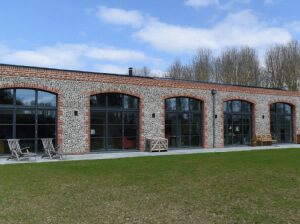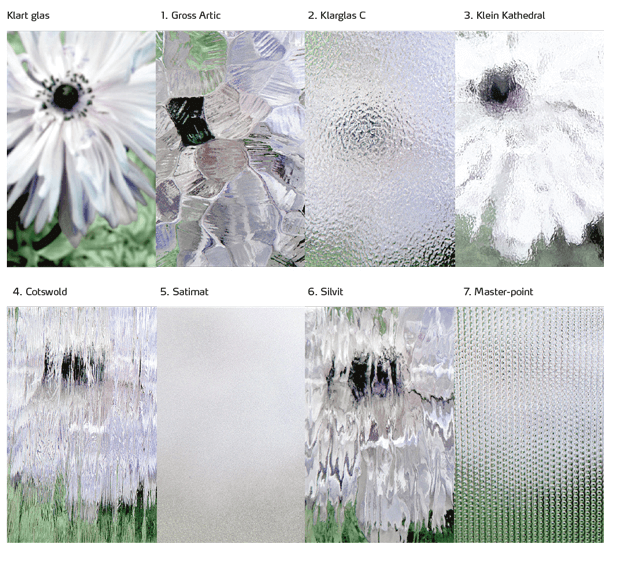Glass Options: How does Glass Specification affect your Windows?
We all know the obvious main purpose of glass but, especially with bespoke products, there are plenty of options that will tailor the product closer to your needs: for different types of security, sound reduction, insulation, heat reduction…we can even tell our factories whether our customers need to reduce lower frequency sounds (like traffic noise) or medium-high frequencies (such as people talking as they pass by).
Our Standard Glass Specification – always included on every quote
Regardless of the product you buy from us, we will always provide what we we believe are the essentials:
Softcoat Low-Emissivity Layer (“Low-E”): This is an incredibly thin coating applied to the pane inside the glass unit, and its job is essentially to keep as much electromagnetic radiation as possible on the side of the glass that it originated from, apart from visible light. The reason why we use the “softcoat” Low-E (rather than hardcoat) is that it has lower emissivity – it does the job better!
So, UV stays on the outside and infrared (heat) stays on whichever side is warmer: so you’ll stay warmer in winter and cooler in the summer.
Argon Filled: every glass unit from us is filled with argon gas as a minimum. Compared to just using air inside the unit (which is still an option on a lot of products…), argon provides improvements to both insulation and sound reduction. We can offer krypton gas as well, which will provide more benefit in both areas, but the cost to performance ratio for krypton arguably doesn’t make this upgrade worthwhile.
Warm edge spacer: aptly named, this is a form of glass spacer around the edge of the unit that reduces cold-bridging. Without a warm edge spacer, so much heat would be lost through the edge of a glass unit. The positive side-effect of using this technology is that less condensation should form around the edge of the glass (since it’s not as much of a cold-spot).

See more in our Long Compton Thatch Cottage Glazing Upgrade gallery.
Safety and Security Glazing
There are two main types of safety glass and, in most cases, we use a combination of both.
Toughened Glass: as the name suggests, this glass is much harder to break than a standard pane. To gain this property, glass is heated up to over 600 degrees centigrade and then rapidly cooled. If something or someone does manage to break this toughened pane (certainly still possible), the pane will break into much larger pieces than it would have originally.
Laminated Glass: is simply two panes of glass sandwiched together with a strong binding resin. If the glass is broken, this interlayer is designed to hold the glass in place, stopping the window from shattering.
So, why do we recommend that people use both in the same unit instead of just doubling-up on one option? Well, both offer very different benefits…so why shouldn’t you take all of them? Our windows are designed to last a lifetime – University research has proven some products have a usable lifespan of over 80 years, so it would be a shame to miss out on a relatively inexpensive glass option.
As a starting point, it makes sense in our products that any window requiring safety glass should have a laminated pane internally. Partly because laminated glass placed on the internal layer provides the best sound reduction. Also because, in the event of someone accidentally falling into the glass, the laminated pane will do its best to “catch” them, rather than shatter into larger pieces.
Since we’ve placed the (quite thick: 6.8mm) pane of laminated glass internally, we don’t want to ruin the insulation of the unit by fitting another thick pane on the outside: the area that the argon gas fills is very important. So, a thinner (normally 4mm) pane of toughened is placed outside. This toughened pane also helps with the common causes of external damage. It will do its best to shrug off footballs, golf balls and most burglary attempts.
Acoustic Options
If you live near a busy road and want to block out as much traffic noise as possible, tell us! Any product should be able to offer you some form of sound reduction, but it’s important to know what each option does…
We mentioned in the introduction: traffic produces lower frequencies of sound than someone talking outside the window. So it’s a good idea to have in mind whether you need to block out primarily those lower or higher frequencies.
Easy bit first: it’s always better to have different thicknesses of glass in the same unit. This is simply so that, if a sound hits the resonant frequency of a glass pane, then the other pane will dampen the noise. And, for higher-level frequencies, this often does a lot of work by itself.
If you regularly hear the conversation of passers-by, simply upgrading the outer pane to 6mm (leaving the inner pane at 4mm) can make a noticeable difference.
Then, for traffic noise, another factor is at play: the heavier your glass unit is, the better it will be at blocking lower level frequencies. So, logically, the thicker the panes, the better(?) Well, yes…but let’s not go overboard because it’s important to keep a good space between the panes to keep good heat insulation.
Generally, adding an 8.8mm laminated pane is a good middle-ground, as the PVB laminate layer also help dampen sound at the same time.
Perhaps a good time to bring in the idea of triple glazing: this will also improve sound reduction, but it’s not as cost-effective as adding the laminated layer. We tend to recommend triple glazing primarily for heat insulation rather than acoustic.

See more in our Bradford upon Avon Timber-Clad Barn Conversion gallery.
Solar Reduction Options
If you have an elevation with a lot of glass and a lot of sun, this is well-worth considering. Again, there are many options, but it’s less complicated than it may initially appear…
You only really need to think about two numbers, since most solar options will be graded along the lines of “70/35” or “60/40” etc. The first number relates to the % amount of light allowed through the glass (0% is completely opaque) and the second number is the amount of solar gain (heat) that’s allowed through (0% is zero solar gain).
For domestic applications, it very rare for a customer’s home to need anything stronger than 70/35 or 60/40, just because it’s not a good idea to stop all solar gain from entering a home (think how cold it is on a winter morning, and then don’t add any heat from the sun throughout the day…)
Please do bear in mind that most solar options will add a tint of some sort to the glass. So, if you have a normal pane of glass next to solar pane, you’ll most likely notice the difference.

See more in our Coach House Conversion gallery.
Bathroom Privacy Glass
Currently, most customers choose a satin acid-etched option for their bathrooms. This is a very minimalist solution without any pattern at all – just a soft satin effect that’s very effective at distorting anything even a small distance behind it. Older properties can suit patterns though, here are some options:
Void Areas
Potentially, bathroom glass may be suitable here too. However, for a completely opaque solution, maybe consider emalit glass. This is still a normal glass unit, but is not possible to see through at all thanks to it being solidly coloured. You can choose to match the colour of the frame, or anything else!
Contact us!
For any questions about our products and services, or to get your quote,
please get in touch by phone, email, or using our in-browser contact form!
Leamington: 01926 935 607
London: 0203 633 0476
E-mail : sales@enlightenedwindows.co.uk
Contact Form: Contact Us









